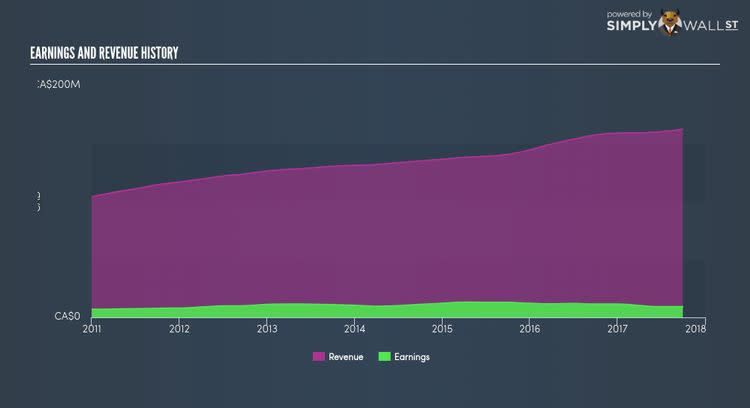Should You Be Concerned About K-Bro Linen Inc’s (TSX:KBL) Risks?

If you are a shareholder in K-Bro Linen Inc’s (TSX:KBL), or are thinking about investing in the company, knowing how it contributes to the risk and reward profile of your portfolio is important. KBL is exposed to market-wide risk, which arises from investing in the stock market. This risk reflects changes in economic and political factors that affects all stocks, and is measured by its beta. Different characteristics of a stock expose it to various levels of market risk, and the market as a whole represents a beta of one. A stock with a beta greater than one is considered more sensitive to market-wide shocks compared to a stock that trades below the value of one.
Check out our latest analysis for K-Bro Linen
What does KBL’s beta value mean?
K-Bro Linen’s beta of 0.24 indicates that the stock value will be less variable compared to the whole stock market. This means that the change in KBL’s value, whether it goes up or down, will be of a smaller degree than the change in value of the entire stock market index. KBL’s beta indicates it is a stock that investors may find valuable if they want to reduce the overall market risk exposure of their stock portfolio.
Could KBL’s size and industry cause it to be more volatile?
With a market cap of CAD CA$377.07M, KBL falls within the small-cap spectrum of stocks, which are found to experience higher relative risk compared to larger companies. Furthermore, the company operates in the commercial services and supplies industry, which has been found to have high sensitivity to market-wide shocks. Therefore, investors may expect high beta associated with small companies, as well as those operating in the commercial services and supplies industry, relative to those more well-established firms in a more defensive industry. This is an interesting conclusion, since both KBL’s size and industry indicates the stock should have a higher beta than it currently has. A potential driver of this variance can be a fundamental factor, which we will take a look at next.
How KBL’s assets could affect its beta
During times of economic downturn, low demand may cause companies to readjust production of their goods and services. It is more difficult for companies to lower their cost, if the majority of these costs are generated by fixed assets. Therefore, this is a type of risk which is associated with higher beta. I test KBL’s ratio of fixed assets to total assets in order to determine how high the risk is associated with this type of constraint. With a fixed-assets-to-total-assets ratio of greater than 30%, KBL appears to be a company that invests a large amount of capital in assets that are hard to scale down on short-notice. Thus, we can expect KBL to be more volatile in the face of market movements, relative to its peers of similar size but with a lower proportion of fixed assets on their books. This outcome contradicts KBL’s current beta value which indicates a below-average volatility.
What this means for you:
Are you a shareholder? You could benefit from lower risk during times of economic decline by holding onto KBL. Take into account your portfolio sensitivity to the market before you invest in the stock, as well as where we are in the current economic cycle. Depending on the composition of your portfolio, KBL may be a valuable stock to hold onto in order to cushion the impact of a downturn. For more company-specific research on KBL, check out our our free analysis plaform here.
Are you a potential investor? Before you buy KBL, you should look at the stock in conjunction with their current portfolio holdings. KBL may be a great cushion during times of economic downturns due to its low beta. However, its high fixed cost may mean margins are squeezed if demand is low. I recommend taking into account its fundamentals as well before leaping into the investment. Continue your research on the stock with our free fundamental research report for KBL here.
To help readers see pass the short term volatility of the financial market, we aim to bring you a long-term focused research analysis purely driven by fundamental data. Note that our analysis does not factor in the latest price sensitive company announcements.
The author is an independent contributor and at the time of publication had no position in the stocks mentioned.

